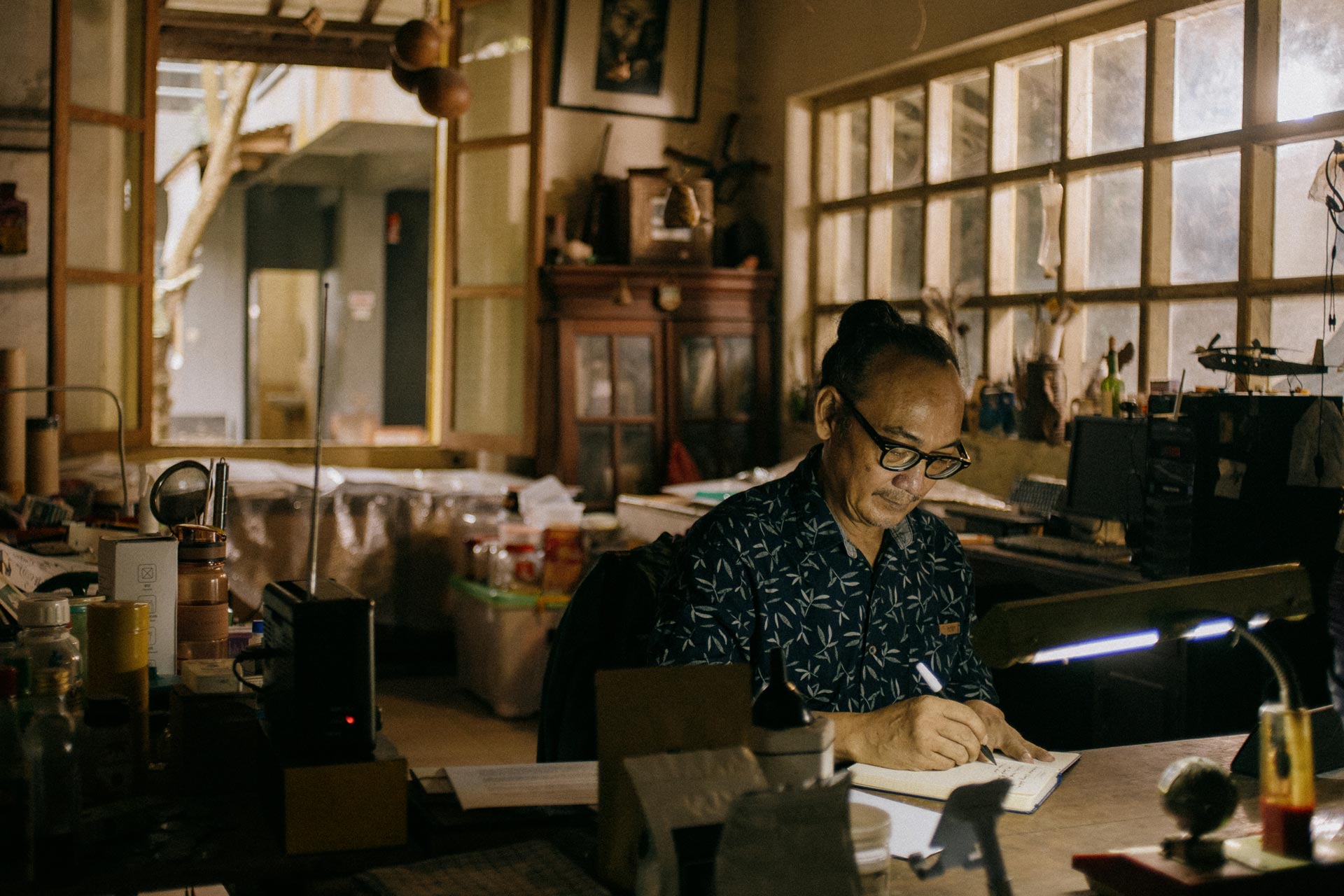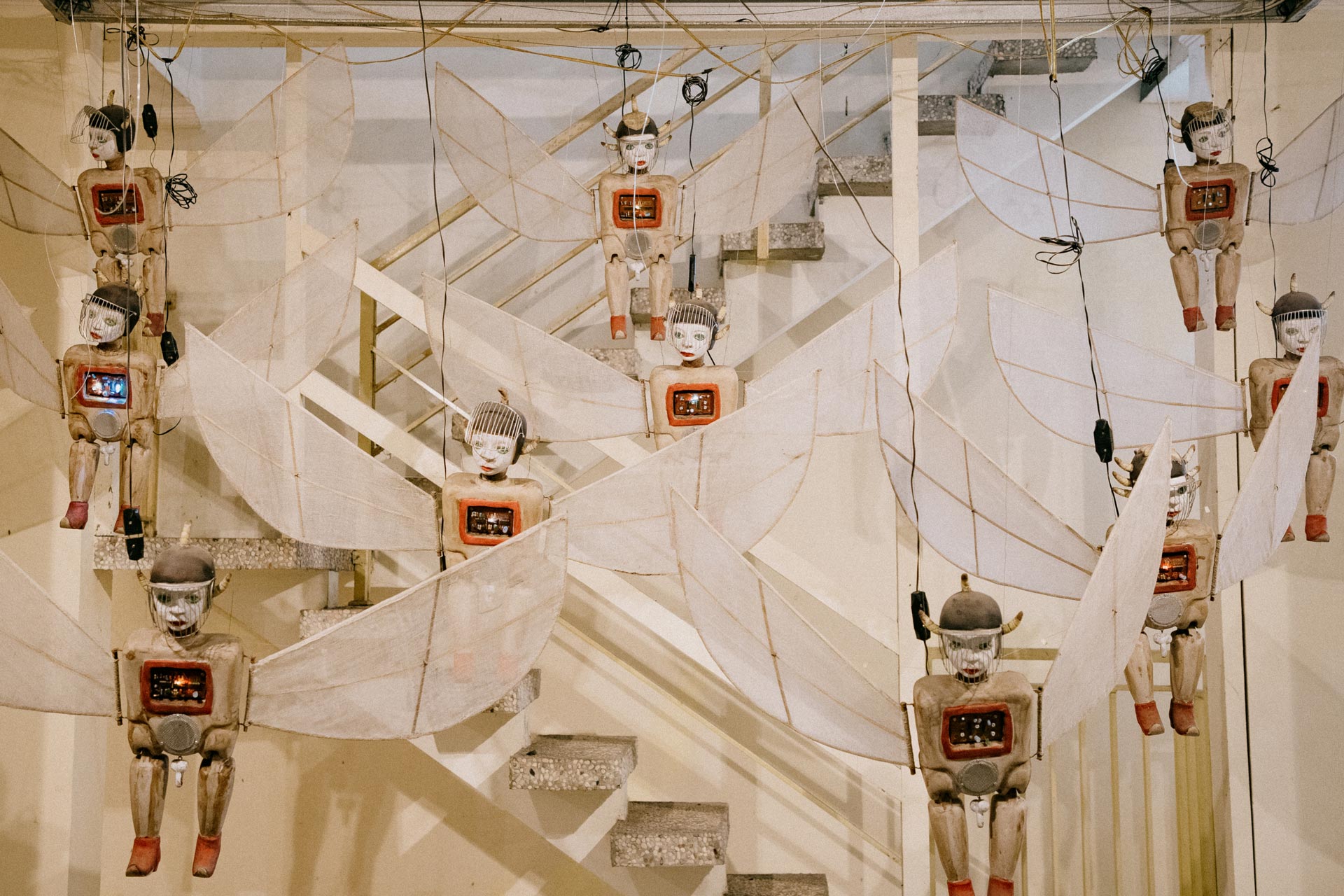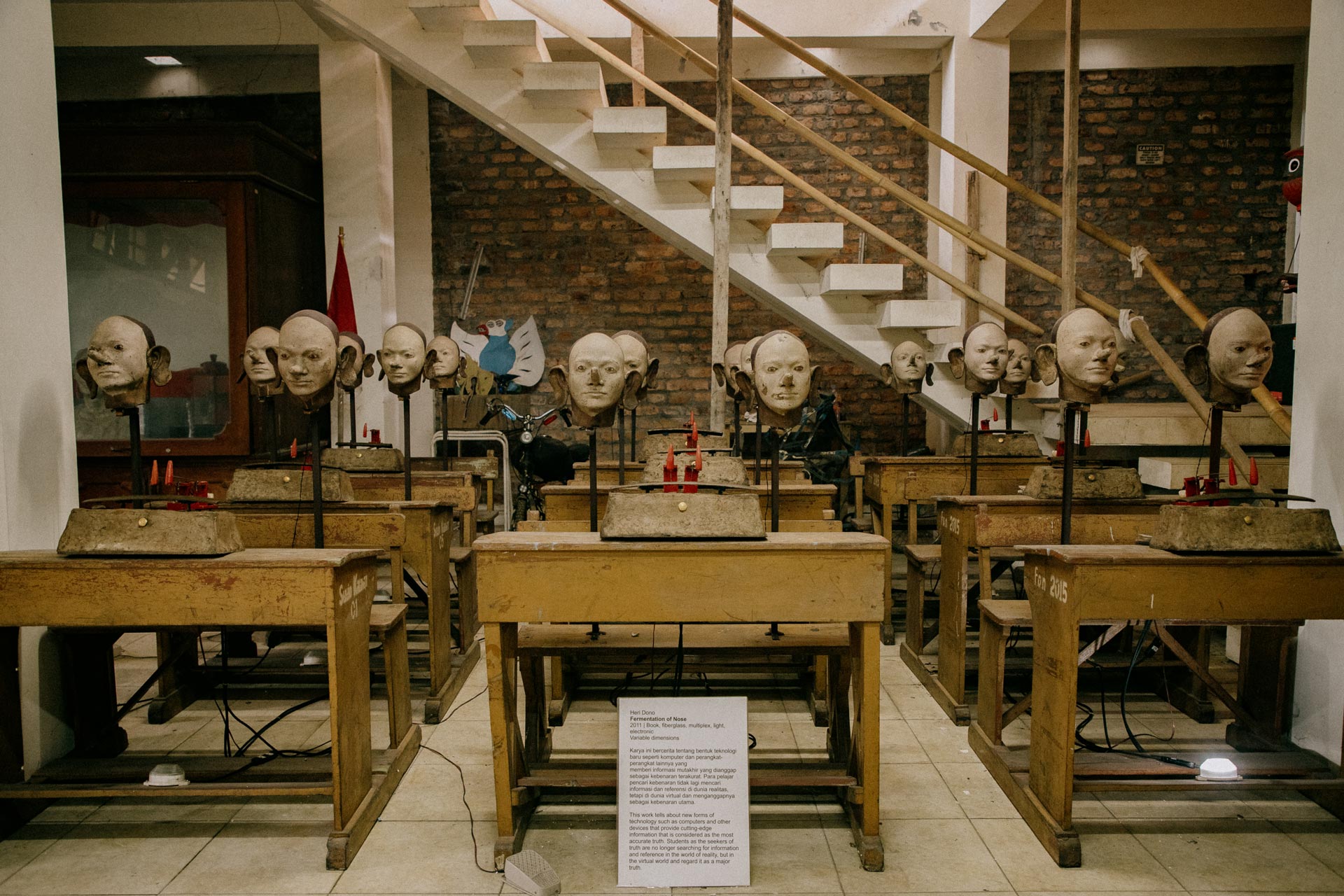Free Shiping All Around Indonesia
Free Shiping All Around Indonesia

When it comes to your art, you have no limit in terms of the medium being used. What does the creative process look like? Does the medium follow the idea or vice versa?
HERI DONO: It is a matter of convention. There is conventional art, and there are non-conventional ones. The conventional fine arts are, for example, visual arts, graphic arts, or sculpture arts. Non-conventional arts are, for example, crafts, interior design, and visual communication design, also called applied arts. Non-conventional art means they haven’t been converted into a particular aesthetic field. Conventional art is considered as developing and innovating what has been converted. However, non-conventional art is more of inventiveness, it enters the area which hasn’t been converted into an art medium. So, my art installations refer to non-conventional art and its inventive nature.
Then, the questions become: what is the purpose of the artwork? Does it need motions or sound? If the answer is no, then there is no need to make an installation, a painting is enough. But when the work needs those elements, for example, the work needs to be hung on the ceiling, it falls under the non-conventional category. Of course, it all refers to science. Examples are physics, Isaac Newton’s concept of gravity, electronics, and motions. We have to learn all of them because this isn’t just a matter of exploring the technologies, but also fulfilling the needs of those moving elements in the installation.
For example, if I want the wings to move, I need some sort of mechanics for the wings to move. My point is, when I wanted to create “Flying Angels,” for example, if I made that in paintings, the message wouldn’t be as strong. But, when I turned the idea into an installation, the message became more solid.

You mentioned using scientific theories and technologies. Do you want to emphasize the connection between art and technology in your artworks?
HERI DONO: Actually, in the Greek language, art and technology are one. Because through art and technology, culture and civilization can develop. Technology can build humans’ desires. For example, when the wheel was founded, people could make wristwatches with gears and other components. What was once a horse-drawn carriage became a machine-drawn vehicle once they took out the horse and added machine and petrol. Art and technology have always been one. For example, the birth of impressionism was due to the invention of the light bulb. Every artist at that time was crazy about light. So was cubism. Picasso discovered the phenomenon of 3 and 4 dimension spaces and then explored them in the concept of cubism. If the 3D printer existed now, maybe Picasso wouldn’t paint about cubism.
Because if we see, for example, schools nowadays, there are certain distinctions between science studies and art studies, making them look unrelated on the surface level.
HERI DONO: But in practice, it also depends, because art is more of humanities, while technology is about machinery. In art, machines are used as a means to realize the ideas in our right brain about imagination, fantasy, and inspiration, which will result in perception. Perception is a truth that is open to multi-interpretation. Science and technology are more of absolute truth.
Your artworks have a lot of references to Indonesian culture, for example, shadow-puppet, gamelan, and Indonesian figures. Sometimes, even the parody of your name, like Donosaurus. Do you intend to bring up your Indonesian identity or your personal identity?
HERI DONO: We don’t see tradition as something exotic. We often get trapped in the motives explored by artists as a means to identify the Indonesian identity. Meanwhile, the way I see it is more fundamental, about tradition. In tradition, all of the art disciplines are one. For example, on Java Island, or here in Jogja or Solo, dance, literature, architecture, textile, weaponry, music, shadow-puppet, et cetera, all are considered as one, with no separation. In modern art, everything is boxed into specific disciplines. There is graphic art, paintings, photography, et cetera. In traditional society, everyone is allowed to do anything outside their own discipline. Someone can sing, perform shadow-puppets, paint, sculpt, make textile, batik, and so forth. It became my foundation to make contemporary art: that maybe before modern art emerged, contemporary art already existed. Because in traditional art there were no boxes. Then, I made those parodies. Usually in contemporary art, people create some kind of level of consciousness. For example, the lower level is those who are still confused and questioning certain issues. People in the second level are those who are starting to discuss the issue. In the third level, the highest level, people are starting to laugh at issues that are actually simple but made difficult. That doesn’t diminish the quality of the art. Take a look at Charlie Chaplin, who turned the issue of him migrating to America into humor when the issue was actually serious. He directed the films himself because he didn’t want to be directed like a puppet. The films were criticizing the American bureaucracy who were discriminating against Chaplin, who was often portrayed as being chased by the police or immigration officers. A lot of the films were censored by the CIA, and Chaplin wasn’t allowed to come back from his visit to Switzerland. That’s why Charlie Chaplin’s museum is in Switzerland now.

In your opinion, how important is it for artists to make politically correct artworks?
HERI DONO: When we talk about art in relation to politics, first, there are artists who step into political practices. They might join a particular group that leans toward a certain political party. Second, there is this thing called political consciousness. Here, artists are trying to gain an understanding of political matters as a means of expression. Because generally, people who have opinions on politics exist in informal forums. For example, people in the past read the newspaper and discovered the ongoing political situation, but they don’t have the means, the vessel, to express their opinions. Artists are lucky because we have the means, the vessel, of expression, for example, through writing poems or paintings. But, the artist isn’t involved in any political practice, they only want to build a platform to create some level of consciousness in the society.